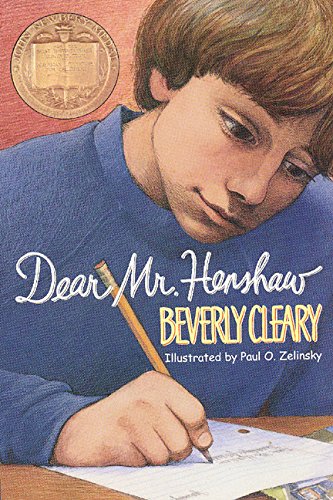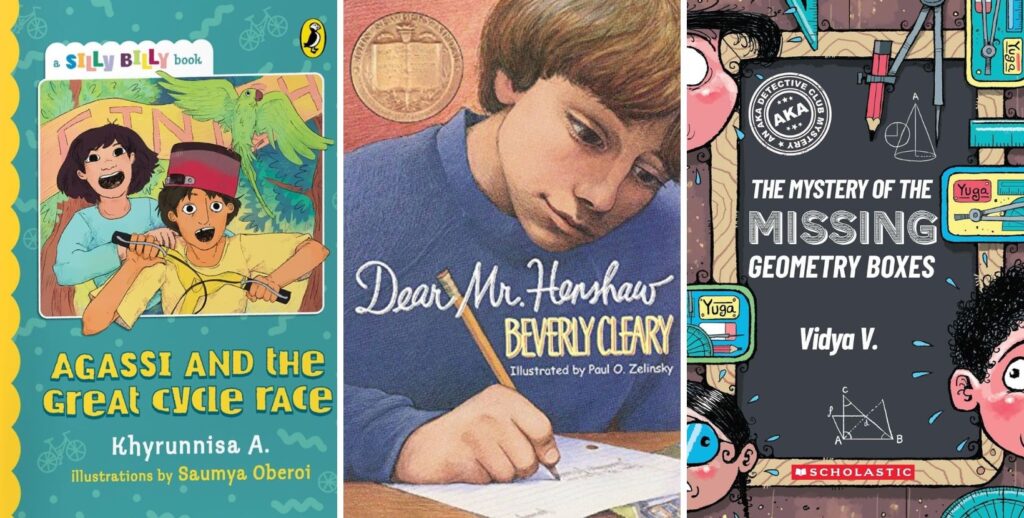I’ve said this dozens of times: I love epistolary novels. I made a video about a few favourites for World Post Day 2021, I love doing letter-writing activities at workshops, and I’ve written an epistolary novel of my own.
When we read Dear Mr. Henshaw for the first time at my book club, I knew it would be a book I would introduce time and time again. So come June, we’ll be rereading this delightful book at Read, Write, Explore!
Leigh Botts writes to his favourite author, Boyd Henshaw, and in the beginning, he doesn’t get a reply. Later, he gets a printed response, rather than a handwritten one, which is almost as disappointing. When he is in the sixth grade, however, he receives a proper letter, which he needs for his author report, and this is the beginning of a funny, moving series of letters he writes about himself, his school and family. As we read Leigh’s letters, we get to know not just him but Mr. Henshaw too. I love it!

Questions
The questions Leigh asks Mr. Henshaw set the ball rolling, and this will lead us to our first activity with the book. If the children had to write an author report, what questions would they ask? And if they don’t like the responses they receive, what will they do?
Taking this idea further, I would love for the children to write to their favourite writers and see whether they receive replies!
Other Scenarios
Even if the children haven’t read The Diary of a Young Girl, most have heard of Anne Frank. Using Dear Mr. Henshaw, Anne’s diary and a few others, I would love for the children to come up with other scenarios in which a story in the form of letters could work. Why would two characters write to each other? And how would the story progress?
Letters
At Read, Write, Explore, one class every two weeks is devoted to writing. Naturally, as we read Dear Mr. Henshaw, we will write letters. This time, I would love for the children to write real letters to one another and post them too. I’ll guide them through a little letter-writing activity, following which I will encourage them to write whatever they want. Each time I work with letters, I realise that many children have no idea what a stamp is or what purpose a letterbox serves. And that makes the whole process even more fun!
Join a programme!
Registrations are now closed for the June-July 2025 edition of Read, Write, Explore. New batches begin every alternate month. Join my mailing list if you would like to receive email notifications about my programmes. Alternatively, follow me on social media – Facebook and Instagram – for regular updates.


Leave a Reply